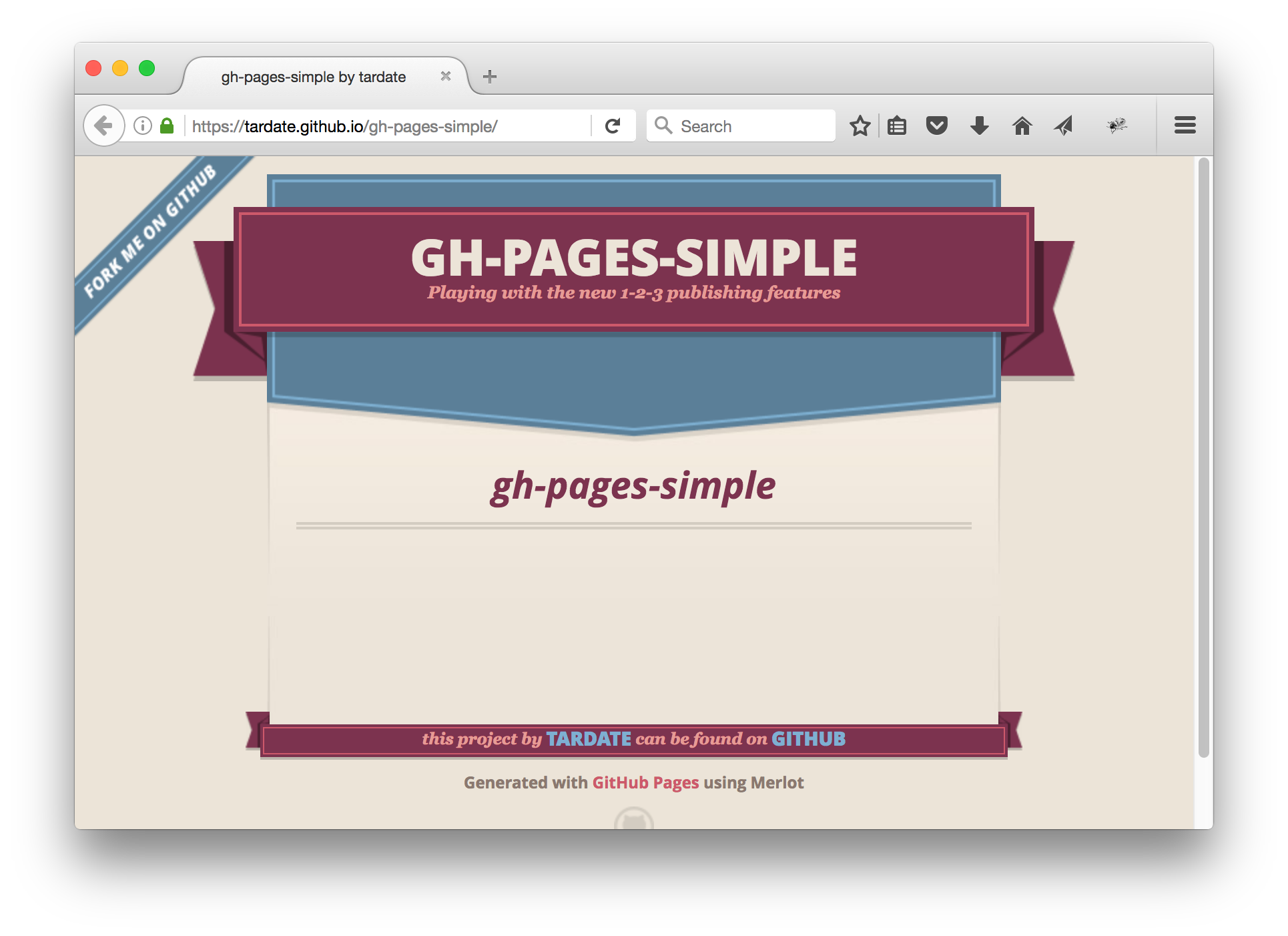#027
Test-driving some techniques for building static sites with Jekyll.
Notes
Jekyll is a simple, blog-aware, static site generator. It takes a template directory containing raw text files in various formats, runs it through a converter (like Markdown) and our Liquid renderer, and spits out a complete, ready-to-publish static website suitable for serving with your favorite web server.
Quickstart - Create and run a Template Site
See the quickstart guide.
gem install bundler jekyll
jekyll new myblog
cd myblog
bundle
jekyll serve
open http://localhost:4000

Build & watch for changes
$ jekyll build --watch
# => The current folder will be generated into ./_site,
# watched for changes, and regenerated automatically.
GitHub Automatic Page Generator (deprecated)
The Automatic Page Generator is an old (deprecated) GitHub feature for generating a web site from a repository. This has now been replaced by Jekyll-based template. GitHub provide some migration support from the settings page.
The gh-pages-auto repo started with the Automatic Page Generator.
- gh-pages-auto GitHub Repo - repo originally built with the Automatic Page Generator
- gh-pages-auto web - how it appears when served by GitHub Pages
GitHub Pages - Simplified Publishing
Provided you work within the currently supported versions of Jekyll and related utilities, then publishing a web site from a GitHub repository can be a very simple process.
The blog post Publishing with GitHub Pages, now as easy as 1, 2, 3 describes the essentials.
- gh-pages-simple GitHub Repo - basic repo using implicit Jekyll page generation
- gh-pages-simple web - how it appears when served by GitHub Pages

GitHub Pages - Offline Publishing
One of the problems with using automatic GitHub Pages publishing is that you must accept the currently supported versions of Jekyll and related utilities.
If this is a deal-breaker, then an alternative is to build Jekyll pages offline using a custom mix of utilities. Then use GitHub Pages to serve the resulting site.
In gh-pages-offline I use a customised jekyll-readme-index gem that is not supported by GitHub Pages servers
- gh-pages-offline GitHub Repo - repo that uses offline generation
- gh-pages-offline web - how it appears when served by GitHub Pages
Themes and Templates
- Themes listing - from the jekyll wiki
- jekyllthemes.org - visual browser of submitted themes
- Adding a Jekyll theme to your GitHub Pages site
Left
Zach Holman published a starter-repo called left that provides all the scaffolding for a minimalist site. It is described in his blog post on left.
Basing a site on left is simply a matter of cloning the repo and customising as required:
- gh-pages-left GitHub Repo - repo for a site based on left
- gh-pages-left web - how it appears when served by GitHub Pages
Pixyll
A simple, beautiful Jekyll theme that’s mobile first pixyll.com, pixyll on GitHub.
Jekyll Tips
- Jekyll Cheat Sheet
- Organizing Jekyll Pages - Damon Bauer
Relative Paths
All generated internal links are relative to the site root. This creates an issue on GitHub Pages since the default site root will be
<org/username>.tardate.io/repository-name/.
The best way around this is to serve GitHub Pages on a custom URL, so the site works fine without any special modification when served on GitHub Pages and also when served locally with:
bundle exec jekyll build
Handling paths was improved with the relative_url filter - see Jekyll 3.3 release notes.
